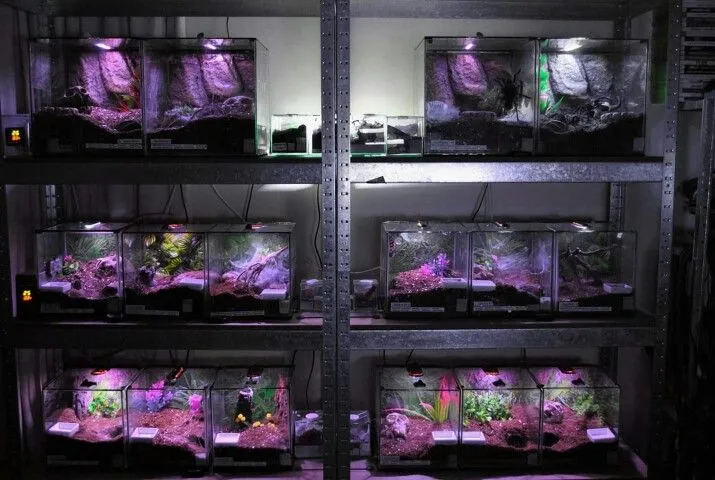What Are Tarantula Enclosures?
Tarantula enclosures are habitats specifically designed to house these fascinating arachnids. They are much more than just a box; they are carefully crafted environments that replicate the tarantula’s natural habitat, ensuring its health, well-being, and longevity. Proper enclosure design considers factors such as size, ventilation, substrate, humidity, temperature, and enrichment. Creating the right enclosure is crucial for tarantula care because it directly impacts the spider’s ability to thrive. An improperly designed enclosure can lead to a host of problems, including molting issues, stress, illness, and even premature death. Therefore, selecting and setting up the best tarantula enclosures is a fundamental aspect of responsible tarantula ownership.
Size Matters Choosing the Right Enclosure
Choosing the right size of enclosure is paramount for your tarantula’s well-being. An enclosure that is too small can restrict movement, leading to stress and potentially impacting the tarantula’s molting process. Conversely, an enclosure that is excessively large for a small tarantula can make it feel insecure and make it difficult for the tarantula to find its food. As a general rule, the width of the enclosure should be at least two to three times the tarantula’s leg span. For terrestrial species, the length and width are the most important dimensions, while arboreal species benefit from more vertical space for climbing. Always remember that tarantulas are ambush predators, and they don’t require a lot of space. They prefer a secure, safe environment where they can establish their territory and thrive. Consider the adult size of the species when selecting an enclosure, so you don’t have to upgrade frequently.
Consider Your Tarantula Species
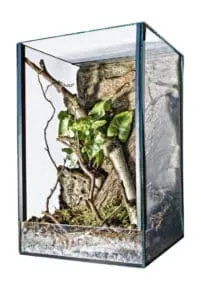
Different tarantula species have different needs. Understanding the specific requirements of your tarantula species is critical in determining the best enclosure setup. For example, terrestrial species, which live on the ground, require more floor space and a substrate suitable for burrowing. Arboreal species, on the other hand, live in trees and will need more vertical space with climbing surfaces like cork bark or branches. Some species, such as those from humid environments, require higher humidity levels, while others thrive in drier conditions. Researching the native habitat and specific needs of your tarantula species is the first and most important step in setting up its enclosure. This research will inform your choices regarding enclosure size, substrate, ventilation, temperature, and humidity. The right enclosure mimics the tarantula’s natural environment, promoting its health and well-being.
Terrestrial Tarantulas Enclosures
Terrestrial tarantulas, which spend most of their time on the ground, require enclosures designed with a focus on floor space. The enclosure should be wider than it is tall, allowing for ample space to move and establish a burrow. A substrate depth of at least 4-6 inches is essential for burrowing species. Substrate should be a mix of materials like coco coir, peat moss, and a bit of vermiculite to retain moisture and allow for burrowing. Provide hiding places, such as cork bark or artificial hides, where the tarantula can retreat and feel secure. Ensure proper ventilation to prevent mold growth in the humid environment. The enclosure design should prioritize a safe, stable environment where the tarantula can feel comfortable and undisturbed, facilitating natural behaviors such as burrowing and hunting.
Arboreal Tarantulas Enclosures
Arboreal tarantulas, which live in trees, need taller enclosures with a focus on vertical space. The enclosure’s height should be significantly more than its width. Provide plenty of climbing opportunities, such as cork bark, branches, and artificial plants. The substrate should be shallower than that for terrestrial species, around 2-4 inches. The substrate’s primary function is to retain humidity, but it should not be too deep. The design should mimic the tarantula’s natural arboreal habitat. Arboreal tarantulas need these vertical structures to climb and create their webs. Proper ventilation is crucial to prevent mold growth and maintain air circulation. A well-designed arboreal enclosure will allow your tarantula to thrive in a space that encourages its natural behavior and provides a secure, comfortable environment.
Ventilation and Humidity for Tarantulas
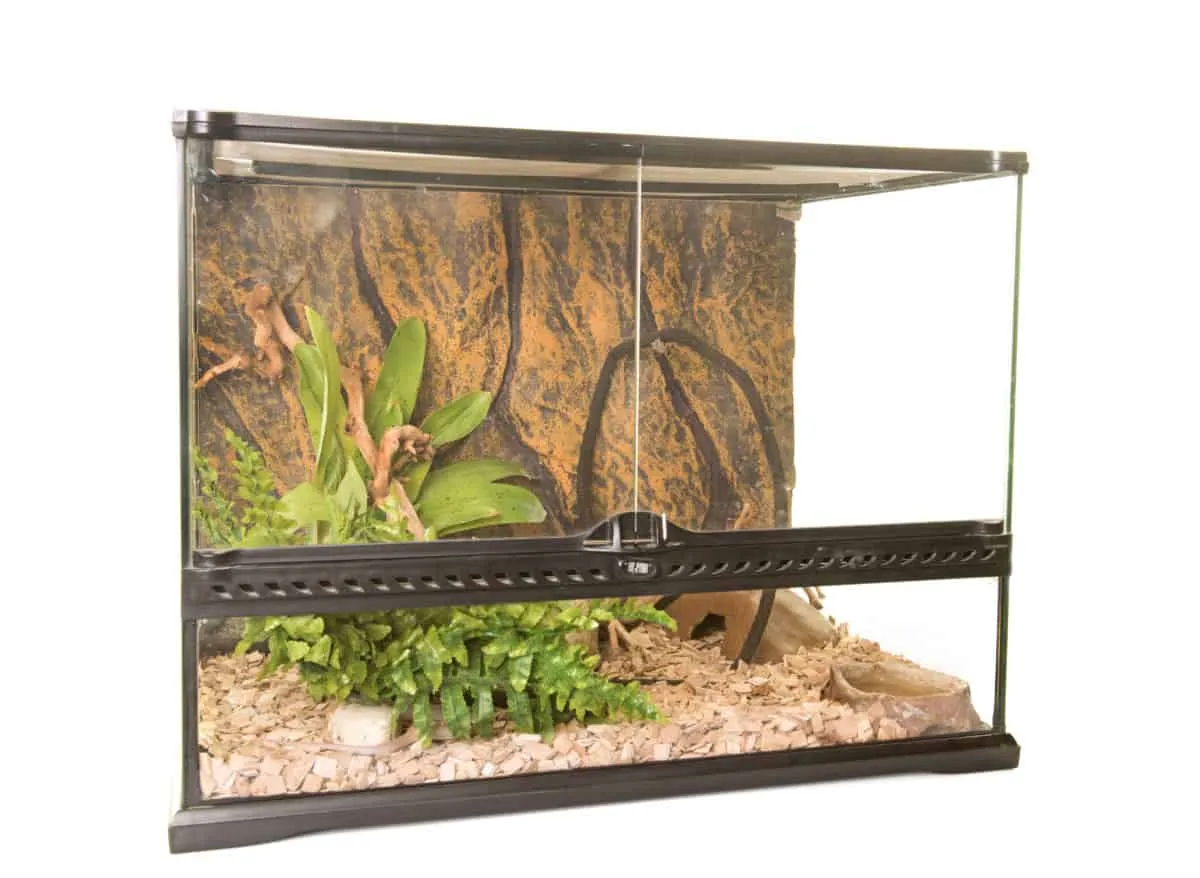
Proper ventilation is essential for maintaining a healthy environment in your tarantula’s enclosure, as it prevents the buildup of stagnant air, which can lead to mold growth and respiratory problems. Ensure there are cross-ventilation holes in the enclosure, usually located on the sides or the top. The size and placement of these holes will depend on the species and the humidity needs of your tarantula. Humidity is also a critical factor, and it should be maintained at the appropriate level for your tarantula species. Most tarantulas thrive at humidity levels between 60-80%, while some species require even higher humidity. You can monitor humidity using a hygrometer. Increase humidity by misting the enclosure with dechlorinated water, especially on the substrate and decor, or by providing a water dish. Always provide a water dish with fresh, clean water for your tarantula. Proper ventilation and humidity control are crucial for your tarantula’s health and well-being.
Substrate Selection for Tarantulas
The substrate is the foundation of your tarantula’s enclosure, serving multiple purposes. It provides a surface for the tarantula to walk on, helps regulate humidity, and allows terrestrial species to burrow. The ideal substrate should be non-toxic, absorbent, and able to hold moisture. There are several types of substrate available, each with its pros and cons. Coco coir is a popular choice, as it retains moisture well and is readily available. Peat moss is another option but can be more acidic, so it should be mixed with other materials. Sphagnum moss is excellent for maintaining humidity in localized areas. Vermiculite helps to aerate the substrate and prevent compaction. The substrate should be deep enough for burrowing species to dig and establish their burrows, typically 4-6 inches. Ensure the substrate is replaced regularly to prevent the buildup of waste and mold.
What Substrate Works Best
The best substrate will vary depending on the tarantula species, but a good starting point is a mixture of coco coir, peat moss, and a touch of vermiculite. Coco coir offers excellent moisture retention and is a natural, sustainable product. Peat moss is also a good choice but is sometimes more acidic, so it’s best used in combination with other materials. Vermiculite improves drainage and aeration, preventing the substrate from compacting too much. For arid species, a substrate mixture that drains well might be preferred, with a higher percentage of sand or clay. For humid species, increase the coco coir or peat moss. Always research your specific species to determine its ideal substrate needs. Regardless of the blend, the substrate should be changed regularly to maintain a clean and healthy environment for your tarantula.
Enclosure Decorating and Enrichment
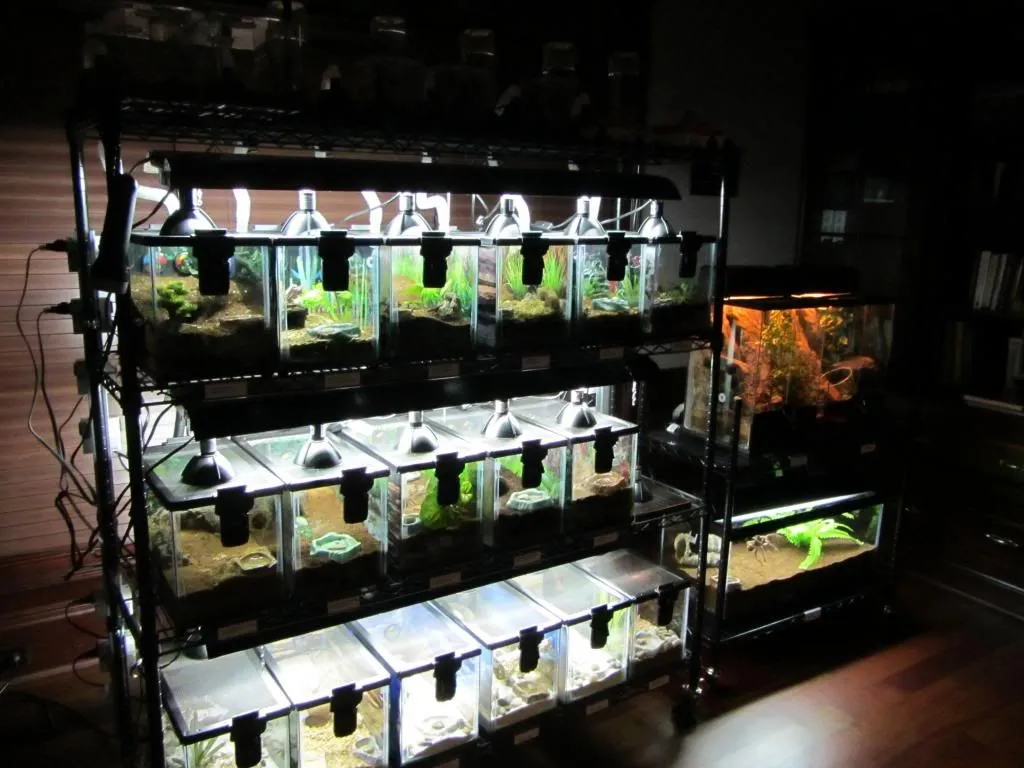
Enriching your tarantula’s enclosure is essential for promoting its well-being and encouraging natural behaviors. Although tarantulas may not seem like they need a lot of enrichment, providing hiding places, climbing structures, and appropriate decor can significantly reduce stress and enhance their quality of life. Arrange the decor thoughtfully to provide hiding spots where the tarantula can retreat, feel secure, and establish its territory. Use non-toxic materials and ensure that any decor items are securely placed to prevent them from falling and potentially harming the tarantula. Avoid sharp objects or anything that could trap the spider. A well-decorated enclosure will also make it more interesting to observe your tarantula, allowing you to enjoy its natural behaviors.
Essential Decor Items
Several essential decor items can enhance your tarantula’s enclosure. Cork bark is an excellent choice for providing hides and climbing surfaces, and it also helps maintain humidity. Artificial plants, such as silk plants, can provide additional hiding spots and add aesthetic appeal. Make sure the artificial plants are thoroughly cleaned and made of non-toxic materials. A water dish is a must-have, providing a constant source of fresh water. The water dish should be shallow enough to prevent the tarantula from drowning. Small terracotta pots or hides offer excellent hiding places and can help the tarantula feel secure. Avoid using anything that could pose a hazard, and always ensure that the decor is stable and safe for the spider. The right decor can create a stimulating and comfortable environment for your tarantula.
Water and Feeding in Your Enclosure
Providing fresh water is a fundamental aspect of tarantula care. Always have a shallow water dish with clean, dechlorinated water available. The water dish should be small enough to prevent the tarantula from drowning. Ensure the water dish is easily accessible and that you check it regularly, refilling it as needed. Feeding your tarantula is also a key element of their care. The frequency of feeding depends on the tarantula’s age, species, and metabolism. Younger tarantulas need to be fed more frequently, while older tarantulas can eat less often. Offer appropriately sized prey, such as crickets, roaches, or mealworms. Remove any uneaten prey after 24 hours to prevent them from stressing the tarantula or causing mold growth. Always follow the feeding guidelines specific to your tarantula species to ensure it receives the right amount of nutrition.
Choosing the Right Food
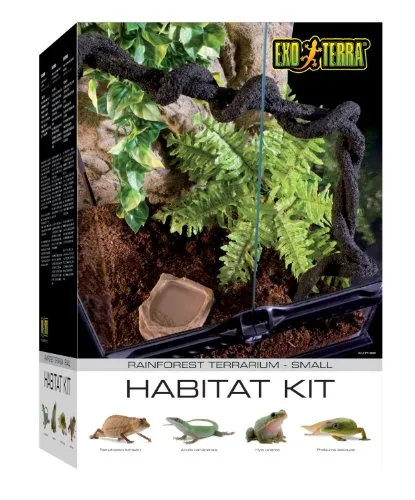
Choosing the right food is important for the health of your tarantula. The most common food items include crickets, mealworms, and roaches. Crickets are a readily available and nutritious food source. Mealworms are easy to obtain and can be a good supplement, but they are higher in fat, so they should be offered in moderation. Roaches offer excellent nutrition, and there are several readily available species, such as Dubia roaches, which are a good option. The size of the prey should be appropriate for your tarantula; the prey should be no larger than the tarantula’s body. Pre-kill the prey before offering it to avoid any risk of injury to the tarantula. Ensure that the prey is gut-loaded before feeding by providing them with nutritious food, so the tarantula receives the maximum benefit from its meal. Regularly observe your tarantula’s feeding habits to ensure it is eating well.
Cleaning and Maintaining Your Enclosure
Regular cleaning and maintenance are essential for maintaining a healthy environment for your tarantula and preventing the buildup of waste, mold, and harmful bacteria. This includes spot cleaning, which involves removing any uneaten food, fecal matter, and dead insects. The frequency of spot cleaning depends on how quickly the enclosure becomes soiled. Replace the water in the water dish regularly and clean the dish. The frequency of cleaning depends on the species, enclosure size, and the amount of waste produced. The enclosure should be thoroughly cleaned and the substrate replaced periodically. This should be done when the substrate is visibly soiled or every 6-12 months, depending on the species and enclosure setup. Always wear gloves when handling the enclosure.
Regular Cleaning Schedule
Establishing a regular cleaning schedule is a key part of tarantula care. A basic cleaning schedule includes daily spot cleaning to remove uneaten food and waste. Weekly, check the water dish and refill it with fresh, clean water. Monitor humidity and adjust as needed. Monthly, inspect the enclosure for any signs of mold or other problems. Every 6-12 months, or when the substrate becomes heavily soiled, plan for a complete substrate change. When changing the substrate, move the tarantula carefully to a temporary enclosure while you clean and disinfect the original one. Always maintain a consistent cleaning schedule and observe your tarantula’s enclosure to ensure it remains a healthy and safe habitat for your pet.
Common Mistakes to Avoid
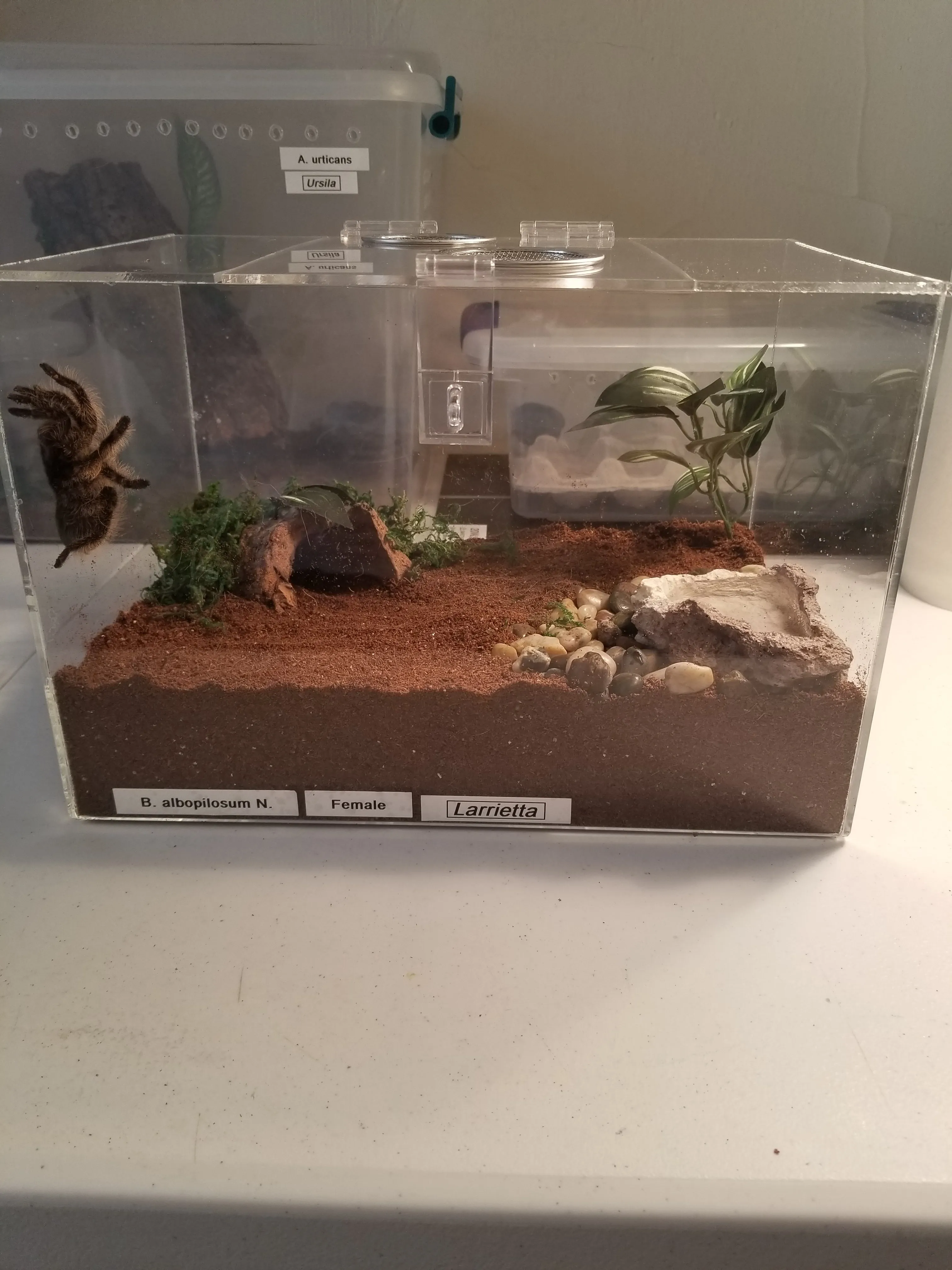
Several common mistakes can compromise the health and well-being of your tarantula. One of the most frequent mistakes is using an enclosure that is too small or too large. Another is inadequate ventilation, which can lead to mold growth. Improper humidity and temperature control can also cause problems, such as molting issues. Overfeeding is another mistake, so you must provide the appropriate amount of food for each species. Using the wrong substrate or one that is too shallow for burrowing species is also an issue. Not providing enough hiding places or enrichment can lead to stress. Handling your tarantula excessively is another mistake, as it can cause undue stress. Understanding these common mistakes will help you create the best environment for your tarantula.
Final Thoughts
Creating the best tarantula enclosures requires careful planning, research, and consistent maintenance. Remember that your primary goal is to provide a safe, comfortable, and enriching environment for your tarantula to thrive. Choose the right size enclosure for the species. Understand the specific needs of your tarantula. Providing proper ventilation, maintaining the right humidity levels, and selecting appropriate substrate are crucial. Include essential decor items and make a regular cleaning schedule. Avoiding common mistakes, and you can create an environment that promotes your tarantula’s health and well-being. By following these guidelines, you can enjoy the rewarding experience of tarantula ownership while ensuring your pet lives a long and healthy life.
